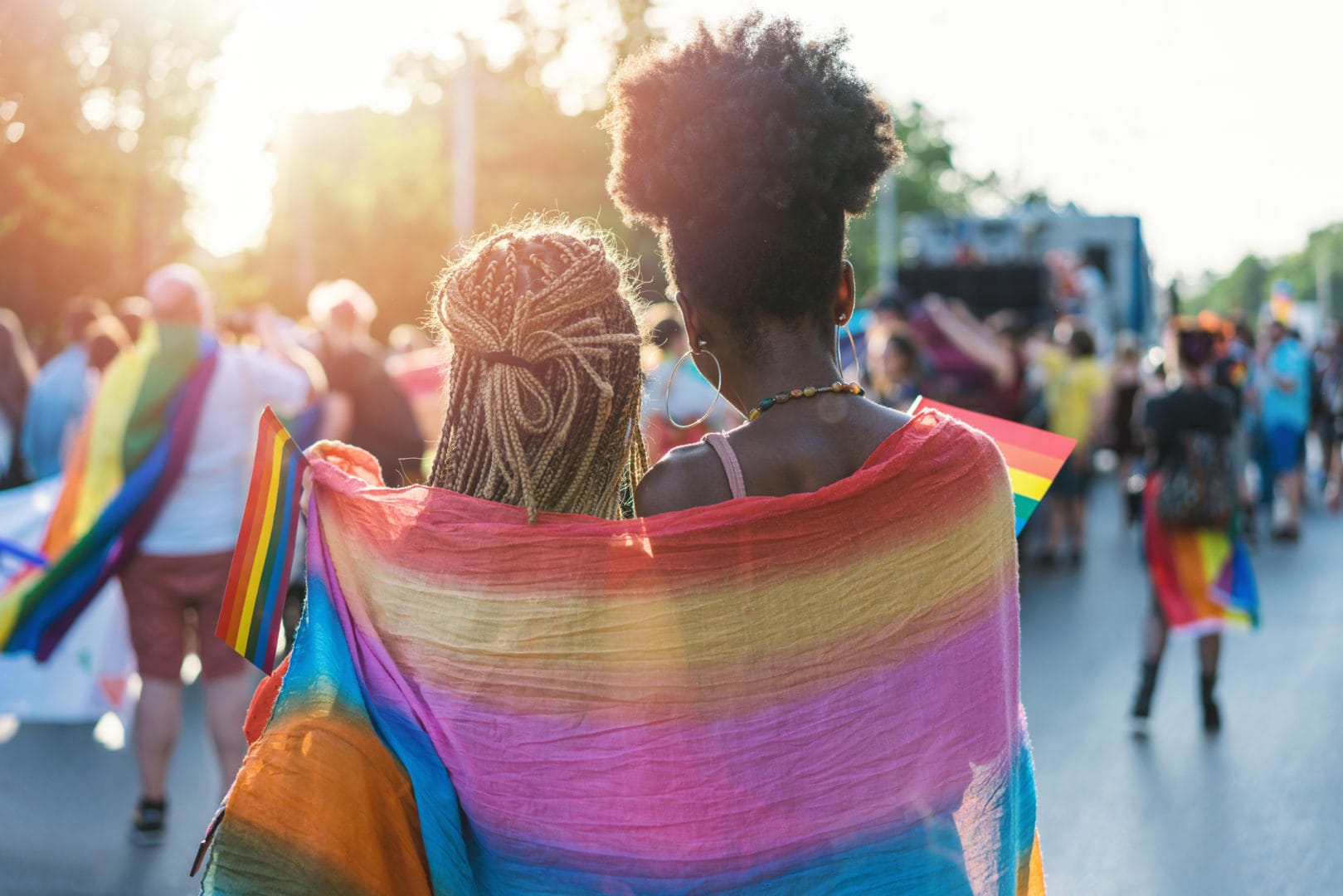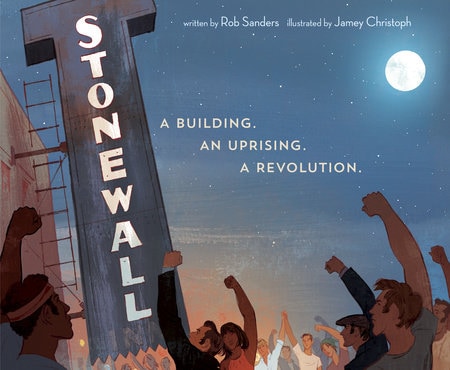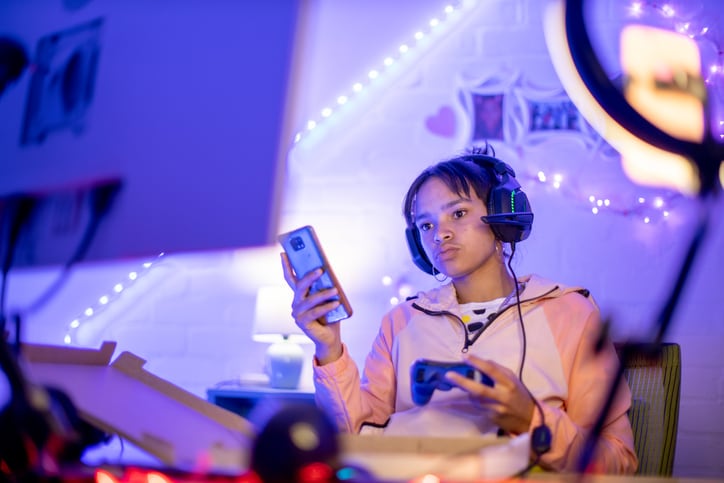Any time is a good time to talk to kids about what it means to be lesbian, gay, bisexual, transgender, queer and/or questioning (LGBTQ+), but June is an especially important opportunity to get the conversation started. June is Pride month, which commemorates the anniversary of the Stonewall Rebellion and aims to increase awareness of LGBTQ+ history, identity and community.
With rainbow Pride flags flying and events taking place all over the country, it’s likely kids will be curious about the history and significance of this important time. As a parent, you might not know how to answer all of their questions or how to break down Pride month for kids but it’s important to talk openly about LGBTQ+ experiences and identity.
We asked experts for their best tips on how to explain Pride to a child, what to share and how to help kids understand the important role they can play in supporting equal rights for all.
6 expert tips to explain Pride month for kids
1. Know the facts about Pride
Before you can talk to kids about Pride, you’ll want to understand it yourself. Pride events are held in June to commemorate the anniversary of the Stonewall Rebellion, which began June 28, 1969. At the time, police raids on LGBTQ+-friendly bars and other spaces were common, but patrons at the Stonewall Inn fought back with a multi-day protest that lasted until July 3, 1969.
Prominent figures in the rebellion included Marsha P. Johnson and Sylvia Rivera, two transgender activists whose enormous contributions to LGBTQ+ activism will be commemorated with an upcoming monument in New York City. (There’s currently a bust of Johnson across from the Stonewall Inn.) During Pride month, parades and marches take place all over the country to celebrate and elevate the history of the LGBTQ+ social movement.
For a kid-friendly history of the uprising at Stonewall, it might be helpful to read a book together, like Rob Sanders’ “Stonewall: A Building. An Uprising. A Revolution.”
2. Be the one to start the conversation
Parents may think kids don’t have questions about Pride or the LGBTQ+ community simply because they haven’t asked, but that isn’t necessarily true. “Kids might not bring things up themselves, but they might notice and be curious about what they see out in the world,” says Parker Morris, a therapist specializing in working with LGBTQ+ individuals and couples at Alma in New York City.
Rather than waiting for them to come to you, Morris says to use the things you see and experience out in the world to bring up the topic naturally. For example, if there are rainbow flags everywhere, ask kids if they know why those are there. That gives you an easy “in” to explain Pride for kids, talk about why it exists and to normalize these types of conversations for the future.
Read more:
3. Keep it simple and kid-friendly
It’s important to go into these conversations knowing the facts, but you don’t have to give kids every single detail of LGBTQ+ history and the Stonewall Rebellion in order for them to understand the significance of Pride.
Lindsay Amer, an LGBTQ+ activist and the creator of Queer Kid Stuff, a popular YouTube channel that offers informative videos about LGBTQ+ identity and history specially tailored to young kids, says parents should strip away their own experiences and baggage and share information in a way kids can identify and empathize with.
The way Amer tells the story around Stonewall is that some LGBTQ+ people went out dancing with their friends, “and then, someone like a police officer knocked on the door and told them they couldn’t dance. How would you feel if someone came in and told you, you couldn’t dance with your friend just because of who you are?’”
“It’s not about scaring kids or showing them negativity. It’s about empowering them to make change.”
—Lindsay Amer, LGBTQ+ activist and creator of Queer Kid Stuff
This approach makes the story more personal. “So, it’s not just a historical moment. It becomes a moment that feels very real to them in their day-to-day lives,” Amer adds. “And then, talk about how it was a riot, it was something that they fought for and had to be proactive about. You don’t necessarily need to go into the violence around it, but really instilling the kind of emotions behind what was happening is what’s important. It’s not about scaring kids or showing them negativity. It’s about empowering them to make change.”
Join Care for free
4. Be positive and affirming
Some parts of LGBTQ+ history are painful and difficult. People have faced discrimination and outright hatred, and unfortunately, those problems still persist. As a parent, it can be hard to explain to kids why someone might discriminate against people just for being who they are. Both Amer and Morris recommend educating kids from a place of positivity and acceptance.
“I frame things in a positive light by talking about the LGBTQ+ community in the framework of resilience,” says Morris. “Despite constant setbacks, LGBTQ+ people have always worked hard to fight discrimination, be brave and be true to ourselves.”
“I frame things in a positive light by talking about the LGBTQ+ community in the framework of resilience. Despite constant setbacks, LGBTQ+ people have always worked hard to fight discrimination, be brave and be true to ourselves.”
— Parker Morris, therapist
It’s also important to make activism and solutions a part of the conversation about Pride for kids. “When you’re talking about the hard parts, you want to be transparent like, ‘OK, [LGBTQ+] is an awesome thing to be, but just so you know, people who identify in this way haven’t always been treated fairly,’” Amer says. “Kids really understand the idea of fairness. It’s something that’s very intrinsic to how they go about their lives day to day. And that also makes it a more active discussion. If something is unfair, we want to make it fair, right? So, you’re not concentrating on the act that is unfair but concentrating on how we can fix it.”
5. Bring in reinforcements
There are so many excellent resources online to help parents explain Pride and LGBTQ+ identity to children. Amer’s YouTube channel, Queer Kid Stuff, has multiple seasons of episodes on topics ranging from race and gender identity to how to be a good ally. Amer also books performances and workshops around identity and activism and also hosts Rainbow Parenting, a podcast for parents, caregivers, educators and other grown-ups who want to help raise kids in a queer and gender-affirming way.
Additional resources recommended by Amer and Morris include:
- Woke Kindergarten: A platform educating kids on racial and social justice.
- The Conscious Kid: A research and policy organization dedicated to reducing bias and promoting positive identity development in youth.
- Family Equality: A virtual support and education space for LGBTQ+ families.
- The Human Rights Campaign: The largest national LGBTQ+ civil rights organization.
6. Keep the conversation going
Talking about Pride or about LGBTQ+ issues and identity isn’t a one-time conversation. Morris says these conversations should be ongoing, and they should be a part of the usual way you inform and educate your kids.
“The thing that I suggest is generally making LGBTQ+-friendly topics part of the family value structure,” Morris says. “Make an environment that normalizes the existence of queer people, whether that’s watching TV shows that have LGBTQ+ characters or having books that also show LGBTQ+ family structures. That way it’s not a conversation that has to be brought up so much as it is a series of conversations that don’t emphasize or avoid the existence of LGBTQ+ people.”







